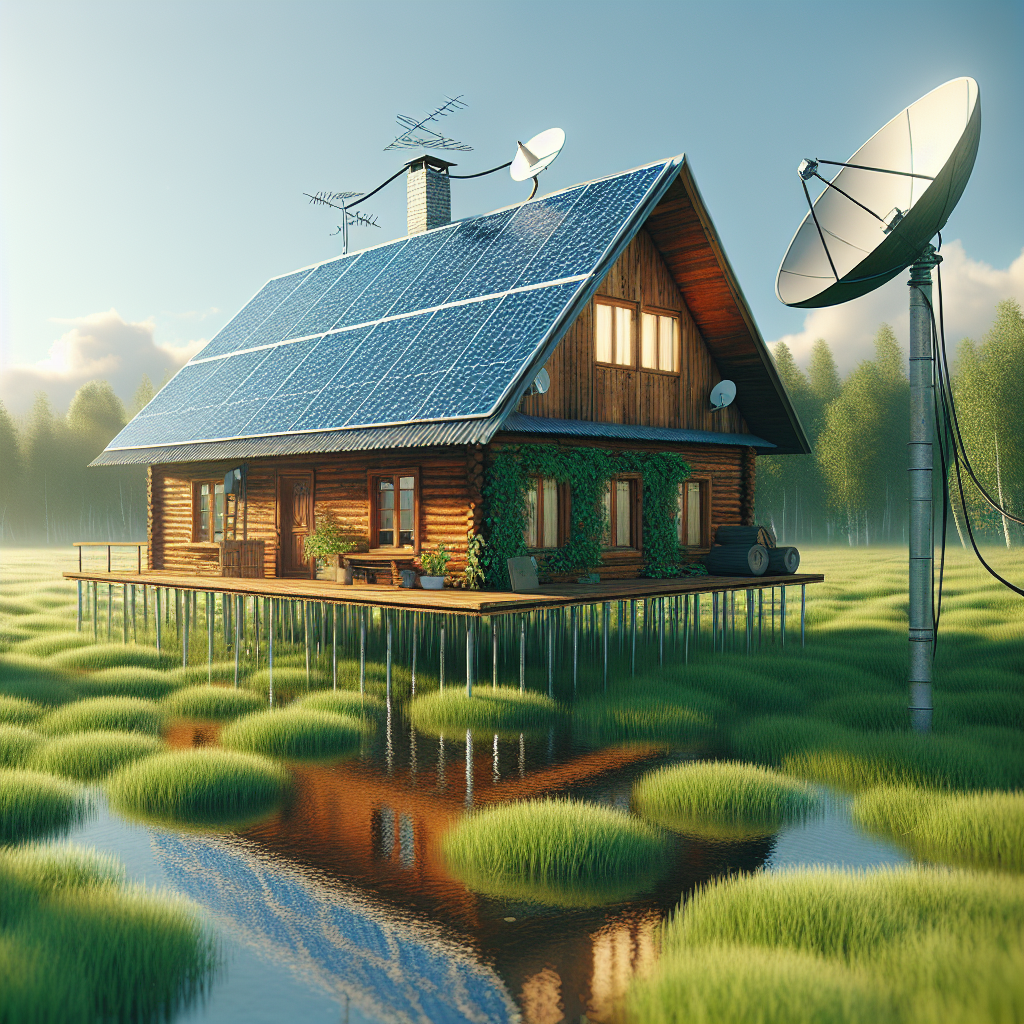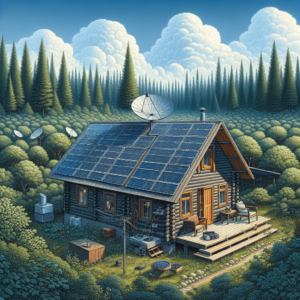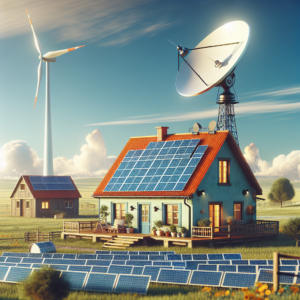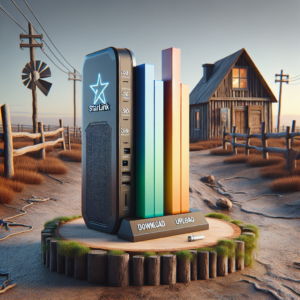
Empower Your Off-Grid Adventure with Solar Backup Solutions
Imagine a lifestyle where you are the master of your own energy, where the sun’s rays are your ally in powering your home, and where independence is not just a dream but a tangible reality. Solar backup solutions for off-grid living are the bridge to this self-sufficient lifestyle, providing you with the power you need, when and where you need it.
Key Takeaways
-
Understand the essentials of a solar backup system for off-grid living.
-
Learn about the components that make up a robust solar backup solution.
-
Discover how to tailor a solar backup system to your unique energy needs.
-
Gain insights into the installation and maintenance of your solar setup.
-
Appreciate the freedom and resilience that solar backup systems can offer.
A Glimpse into Solar Energy Storage
At the heart of off-grid living is the ability to store the sun’s energy for use when the sun isn’t shining. Solar energy storage systems are like a bank account for your electricity, allowing you to deposit energy during sunny days and withdraw it as needed. This ensures a consistent and reliable power supply, regardless of weather conditions or time of day.
Components of a Solid Solar Backup System
A robust solar backup system is more than just solar panels on your roof. It’s an integrated network of components working in harmony to provide you with uninterrupted power. From high-efficiency solar panels to deep-cycle batteries and smart inverters, each element plays a crucial role in ensuring your off-grid energy system is reliable and efficient.

Understanding Solar Backup Systems
Solar backup systems are not a one-size-fits-all solution. They are customizable to fit your specific living situation and energy needs. Whether you’re in a tiny home, a remote cabin, or a self-sustaining homestead, there’s a solar backup solution that can be tailored just for you.
Core Elements Defined
When we talk about solar backup systems, we’re referring to a few key components. Solar panels, which capture sunlight and convert it into electricity; batteries, which store this energy for later use; charge controllers, which protect your batteries from overcharging; and inverters, which convert the stored energy into usable power for your home appliances.
Understanding these components is the first step to designing a system that meets your energy needs and ensures you have power when you need it most. Now, let’s dive into each of these elements and see how they contribute to a seamless off-grid experience.
The Role of Batteries in Energy Independence
Batteries are the cornerstone of your solar backup system. They’re like the heart in your body—storing the lifeblood of electricity and pumping it out when needed. But not all batteries are created equal. Deep-cycle batteries, for example, are designed to be discharged and recharged many times, making them ideal for solar setups. They come in various types like lead-acid, lithium-ion, and saltwater, each with their own benefits and considerations.
Choosing the right battery involves looking at capacity, lifespan, maintenance, and cost. A higher capacity means more stored energy, giving you a longer power supply during darkness or cloudy days. Lifespan is critical too; a battery that lasts longer will save you money and hassle over time. And remember, maintenance varies between battery types—some require regular check-ups, while others are almost set-and-forget.
Inverters: Converting Sun to Service
Inverters are your solar system’s translators, taking the DC power stored in your batteries and turning it into the AC power that runs your home’s appliances. A good inverter not only converts energy efficiently but also manages your power flow to optimize battery life.
There are different types of inverters, such as modified sine wave and pure sine wave. Pure sine wave inverters are generally better because they provide cleaner power that’s akin to what you get from the grid, which is important for sensitive electronics. They’re also more efficient, meaning less energy is lost during the conversion process.
Choosing the Right Solar Backup for Your Needs
Selecting the right solar backup solution is a personal journey. It’s about understanding your energy needs and matching them with the right combination of components. Your lifestyle, location, and energy consumption patterns are all unique, and your solar system should reflect that.
Evaluating Energy Needs
Start by assessing how much energy you use. Look at your current utility bills or use an energy monitor to track your consumption. Consider not just your current needs but also future ones. Will you be expanding your home, or perhaps adding an electric vehicle to your life? These factors will influence the size and capacity of your solar backup system.
It’s also important to think about your energy use throughout the day and across seasons. Do you use more power in the mornings or evenings? Does your consumption increase in winter? Understanding these patterns will help you design a system that can handle your peak energy demands.
Battery Capacity and Solar Panel Efficiency
Battery capacity is measured in kilowatt-hours (kWh), and you’ll want enough to cover your energy use during the longest expected period without sunshine. Solar panel efficiency, on the other hand, determines how much of the sun’s energy can be converted into usable electricity. More efficient panels can capture more energy in a smaller space, which is great if you have limited roof area.
When pairing batteries and solar panels, aim for a balanced system where your panels can sufficiently recharge your batteries during daylight hours to meet your energy needs at night or during cloudy days.
Expandability and Future-Proofing Your System
As you plan your solar backup system, consider its expandability. Your energy needs might grow, and having a system that can scale up is crucial. This could mean choosing a charge controller and inverter that can handle more capacity or opting for modular batteries that can be easily added on.
Future-proofing also means looking at emerging technologies and trends. Will your system be compatible with new types of batteries or solar panels? Can it integrate with smart home systems or energy management software? These considerations will help ensure your investment remains valuable and adaptable for years to come.

Installation Tips for Peak Performance
Installing a solar backup system is a pivotal moment in your journey towards off-grid living. It’s essential to get it right to ensure your system operates at peak performance. Proper installation involves correct positioning of solar panels for maximum sunlight exposure, secure mounting to withstand the elements, and meticulous wiring to prevent energy loss.
Professional vs. DIY: What You Need to Know
Deciding between a professional installation and a DIY approach is a big decision. A professional installer brings expertise and experience, ensuring your system meets safety standards and operates efficiently. They can also navigate permits and regulations, which can be daunting. However, if you’re handy and have a solid understanding of electrical systems, DIY installation can be rewarding and cost-effective. Just remember, safety first—working with electricity and on roofs can be dangerous, so don’t take unnecessary risks.
Maintenance to Maximize Lifespan
Like any significant investment, your solar backup system needs regular maintenance to perform its best over the years. This includes cleaning solar panels to prevent dirt and debris from reducing efficiency, checking connections for corrosion or wear, and monitoring battery health. Scheduled maintenance can prevent small issues from becoming big problems and will help maximize the lifespan of your system.
Troubleshooting Common Issues
Even the best systems can encounter issues. Common problems include reduced power output, battery charging issues, and inverter errors. Learning to troubleshoot these can save you time and money. For instance, reduced power could be due to dirty panels or shading, while battery issues might stem from improper settings on your charge controller. When in doubt, consult your system’s manuals or reach out to a professional for advice.
Real-Life Applications and Success Stories
There’s nothing quite like hearing about successful off-grid living to inspire and inform. Real-life applications of solar backup solutions offer valuable insights into what works and the impact it can have on individuals’ lives. From remote cabins to traveling nomads, these stories showcase the versatility and reliability of solar power.
Case Studies: Life Off the Power Grid
Consider the story of a family living in a remote mountain cabin. With no access to the grid, they turned to solar power to meet their energy needs. They installed a system with enough battery storage to power their home through the long winter nights, and with careful energy management, they live comfortably, unaffected by power outages that plague the nearby towns.
Another example is a couple who converted a bus into a mobile home. They equipped it with a solar backup system, allowing them to travel without the need for external power sources. Their system powers everything from their fridge to their laptops, enabling them to work and live anywhere the sun shines.
These case studies are not just stories; they’re real-life examples of how solar backup solutions empower individuals to live independently, sustainably, and with a peace of mind that only self-sufficiency can bring.
How Solar Backup Solutions Saved the Day
Picture this: a rural homestead, far from the nearest power line, faces a severe storm. The grid goes down, but the house remains lit, the refrigerator hums steadily, and the family stays connected. This isn’t luck; it’s the result of a well-designed solar backup solution. When the grid fails, their system kicks in without a hitch, proving that self-reliance isn’t just practical, it’s essential.
In the wake of a natural disaster, a community center equipped with solar panels and batteries became a beacon of hope. It served as a charging station for emergency devices and a warm space for neighbors to gather. Solar backup solutions didn’t just keep the lights on; they kept spirits high.
From Sunny Days to Stormy Nights: Solar Reliability Tested
Reliability is the cornerstone of solar backup solutions, and their true test comes during the harshest conditions. Consider a farmstead in the Midwest, where tornado warnings are frequent. When a powerful storm cut off power, their solar backup system took over, ensuring the safety and comfort of the family through the night. The next morning, the sun rose, the panels began to recharge the batteries, and life went on as usual.
It’s these moments, from sunny days to stormy nights, that demonstrate the resilience of solar power. It’s a testament to the technology’s reliability and the peace of mind it provides to those who have embraced off-grid living.

Harness the Sun: Bridging to Complete Off-Grid Living
Transitioning to complete off-grid living is a journey of embracing the sun’s power to its fullest. It’s about creating a harmonious relationship with nature, where every sunrise brings energy independence and every sunset brings satisfaction in your sustainable lifestyle choices.
Integrating Satellite Internet with Solar Power
In today’s connected world, going off-grid doesn’t mean going offline. Integrating satellite internet with your solar power setup ensures you stay connected to the wider world. With the right equipment, powered by your solar batteries, you can access the internet for communication, entertainment, and education, no matter how remote your location.
This integration is seamless. A satellite dish, a modem, and a power source are all you need. The dish captures the signal, the modem converts it, and your solar system provides the electricity, ensuring you’re always just a click away from the rest of the world.
Lifestyle Adjustments for Sustainable Living
Embracing off-grid living with solar backup solutions involves lifestyle adjustments that are both rewarding and enlightening. It’s about becoming more energy-conscious, understanding the ebb and flow of your power usage, and making smart choices to ensure your energy reserves are always sufficient.
It might mean shifting energy-intensive tasks to peak sunlight hours or adopting energy-efficient appliances. Every small change contributes to a larger picture of sustainability and self-sufficiency that defines off-grid living.
Off-Grid Living with Modern Comforts
Off-grid living doesn’t mean sacrificing comfort; it means redefining it. Modern solar backup solutions are sophisticated enough to power a wide range of appliances, from washing machines to home entertainment systems. With the right setup, living off-grid can offer all the modern comforts you’re used to, powered by the clean, renewable energy of the sun.
It’s about finding the balance between technology and nature, where your carbon footprint is minimized, but your quality of life is maximized. Solar backup solutions are the key to unlocking this balance, allowing you to live comfortably while being kind to the planet.
Frequently Asked Questions (FAQ)
How Do Solar Backup Solutions Work?
Solar backup solutions capture the sun’s energy through panels and convert it into electricity that’s either used immediately or stored in batteries for later use. During the day, your system generates power, and excess energy charges the batteries. At night or on cloudy days, the stored energy is used to keep your home powered. A charge controller manages the flow of electricity to and from the batteries, while an inverter converts the stored DC power into AC power for household use.
Can I Install a Solar Backup System Myself?
Yes, you can install a solar backup system yourself if you have a good understanding of electrical systems and are comfortable with home improvement projects. However, it involves working with electricity and often on rooftops, so safety is paramount. If you’re not experienced, it’s wise to hire a professional. They can ensure the system is installed correctly and safely, and also help with local permits and regulations.
How Much Maintenance do Solar Backup Systems Require?
Solar backup systems require minimal maintenance, but regular check-ups can extend their lifespan and ensure optimal performance. This includes cleaning solar panels, checking connections for tightness and corrosion, and monitoring battery health. Depending on the type of battery, you might also need to check fluid levels and top them up as needed. Typically, a yearly inspection by a professional can help catch any potential issues early.
What Happens to My Solar System During Power Outages?
During power outages, your off-grid solar system continues to operate as normal since it’s not connected to the grid. Your batteries will supply power to your home, and once the sun comes up, your solar panels will start recharging the batteries. For grid-tied systems with battery backup, the system can automatically disconnect from the grid and switch to battery power during an outage.
Is It Possible to Go Completely Off-Grid with Solar Power?
Absolutely! With a well-designed solar backup solution, you can meet all your energy needs and live completely off-grid. It requires a careful assessment of your energy consumption, an appropriately sized solar panel array, and enough battery storage to handle your power needs during periods without sunlight. Off-grid living also often involves energy efficiency measures and lifestyle adjustments to optimize your energy use.
Remember, the journey to off-grid living is as much about the destination as it is about the learning and growth along the way. Embrace the adventure, enjoy the process, and take pride in the knowledge that with every sunrise, you’re taking a step towards a brighter, more sustainable future.







